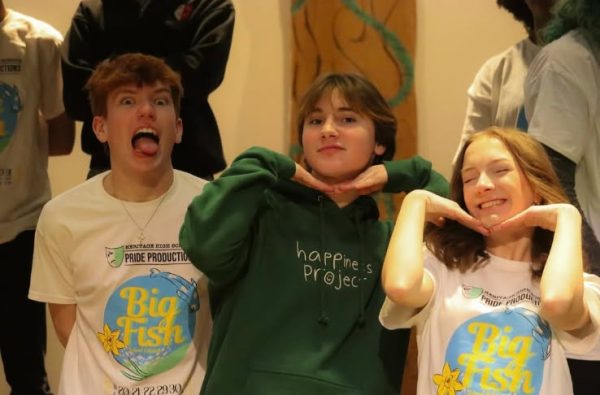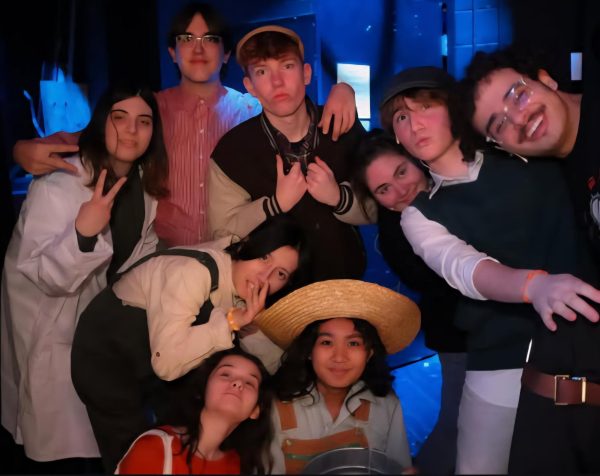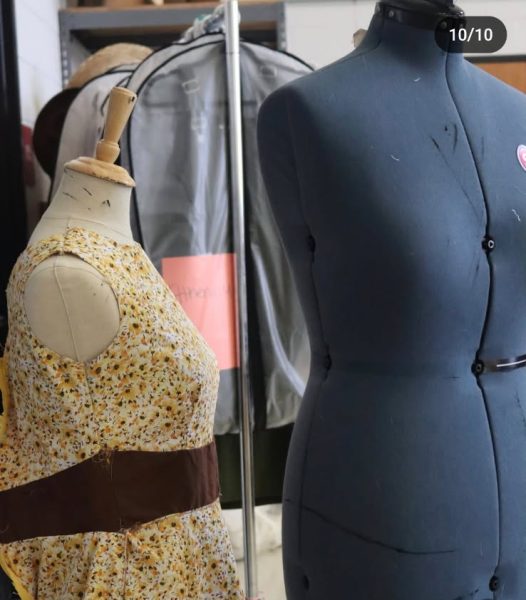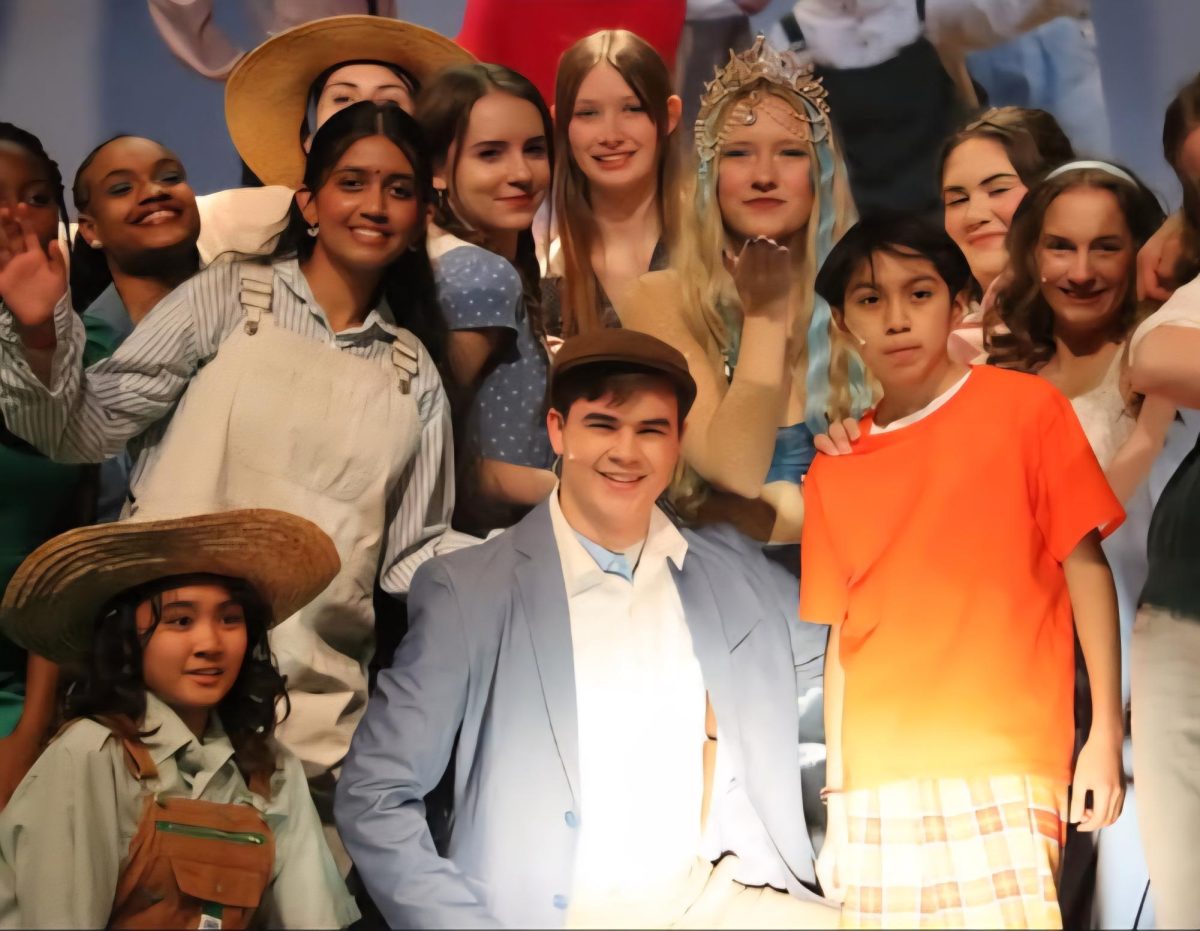The Heritage High School Drama team has just put together an amazing musical of the fantastic story of Big Fish. Based on the life of Edward Bloom, Big Fish is about an illustrious storyteller whose life is coming to an end. In an adventure between past and present, his son, Will, must find the truth behind his father’s story while trying to mend their relationship and make up for lost time before it is too late.

Big Fish is a musical based on a book performed by Heritage High School. Students worked for months preparing and perfecting their skills for the opening night. Many of us just see what is on stage in front of us, but what about the process before the play – the behind the curtain?

Starting from the actors themselves, Oliver Stoltz, who played Zacky Price, had much to say about his process. He explained that while getting into character and learning the script was not a challenge, there were others—for instance, dancing. Musicals are filled with dance numbers, and as Stoltz explained, he had zero rhythmic abilities so having to dance was a challenge. Similarly, McKenzie Hammert, who played Jenny Hill, Edward’s ex-girlfriend, mentioned the most challenging part was the considerable amount of dance numbers as well as her musical parts. She had to learn multiple different pieces with different harmonies while also leading the group. “I had to learn almost all of the music’s different harmonies.”
While the actors had their challenges, so did the understudies. When speaking with Eliza Korff, an understudy for Sandra Bloom, the hardest part was learning her part without proper rehearsal or show time. As an understudy, your rehearsal time is often limited, and you do not get enough time to run things through, so you have to learn everything by watching. Korff, who also played the lead role in Matilda in Heritage’s musical last year, explained how this made being an understudy harder.
Another part of the process behind the play was learning the script. Each of the actors has their unique way of getting into character. As already mentioned, as an understudy, Korff had her own way of learning lines and getting into character without constantly rehearsing. On top of watching her character, she would practice in her own time and start learning bits of the scripts and dance, slowly piecing them together. Additionally, Stoltz mentioned it wasn’t a challenge to get into character. He had felt as if he was already similar to his character personality-wise, so he just needed to act like himself. Contrary to Hammert, who had a special technique to get into character. Using Spotify, she would create music for all of her characters as well as a Pinterest board to get into the vibe and her characters’ persona. Additionally, because Hammert had numerous singing parts, she learned her lines by corresponding them to her songs: “I feel like it’s easier for me to memorize music rather than lines.”

After their first performance, the cast was proud of themselves for their hard work. “Being able to perform with all my friends” was the most rewarding part mentioned Stoltz. The other cast members also agreed with Hammert mentioning how stepping on the stage takes all your worries away. It’s a very positive experience for all your hard work to come together. Similarly to Korff, who told me being able to perform and show everything you have worked on, is truly amazing.
The actors aren’t the only people bringing this show to life; there are also those in ensemble, pit, costume, set, publicity, and more. Specifically, Hilet O’Dell, a lighting technician, shared her experience working on set. Learning the process of lighting was not easy. It required the crew to determine optimal positions by constantly adjusting the lights, which often took a great amount of time, she laughed. Additionally, O’Dell and the lighting crew also had to design how the light would look, ensuring it was perfect on stage. One of the hardest parts, however, was at the start. She mentioned whilst it was fun to continue rigging the lights, it was a great deal of information, especially at the beginning, and it became hard to keep up. Moreover, another part of her job was looking through the script to see where lighting was necessary to supplement the play, which was a lot. One of O’Dell‘s favorite parts of controlling the lighting was getting to see the whole stage. “It’s a cool point of view to see everyone.” Lighting was an important part of the play. She shared how the lighting adds an emphasis on different emotional parts of the play, helping make a scene come off as its intended emotion to the audience.

Lighting wasn’t the only part that made the play better: the costumes were also a big part of the play. Corrine Stanley, a seamstress for the play, spoke about the process of making costumes. The first part was making a mood board. It helped determine what the vibe was for the play, the colors, and how actors should look on stage. After making the mood board, it was time to take measurements, which was extremely long since there were around 50 people. After all that, it was time to start creating the costumes. Stanley said they would select and choose items from a closet filled with costumes and outfits, mixing fabrics and colors to see what fits best for the play. “We would just pick various items and have the actors try it on.” Next was fitting; the actors would try on the outfits, and the costume committee would alter the clothes according to their measurements. The whole process was mainly mixing stuff up, trying it on, altering it, and having to do it all over again. Costumes made the actors’ roles feel authentic and helped shape the theme or the mood of the play. According to Paola Soto Diaz, the costumes immersed both the actors and the audience into the world of Big Fish. Returning to Stanley, one of her favorite parts of making costumes was the “creative liberty.” The costume committee had a great extent of freedom in making the costumes, and one of her favorite parts was making the daffodil skirts. She stated how she loved how ethereal the costumes looked and how fun it was to pick the colors and make the costumes.
Lastly, another big part of the background was the pit. Speaking with Christy Lin, who was a part of pit, gave some insight into the music of the play. Lin explained how the music did a lot for the play. It was a cue to the cast and audience that an actor was starting their song, but it also gave depth to the play, adding suspense or emotion to a scene. Whilst new, it was an exciting play of which to be a part. It had many different rhythms and music that helped set the scene. However, while enjoyable, the different components of the songs did present challenges. Unlike Matilda, Heritage High School’s musical last year, Big Fish‘s music was much harder to play. According to Lin, the different techniques were important to get perfect to properly execute the music. As a group, the pit started rehearsing as a band, then moved into the auditorium to rehearse with the actors and more. Playing pit was very time-consuming but rewarding, Christy Lin shared, adding that those planning on joining should be prepared for long hours. All this hard work allowed the audience to just sit back, relax, and listen to the music.
Everyone, whether on stage or not, had a very important role in bringing the musical together and helping it come to life, and they all deserve a big applause.









